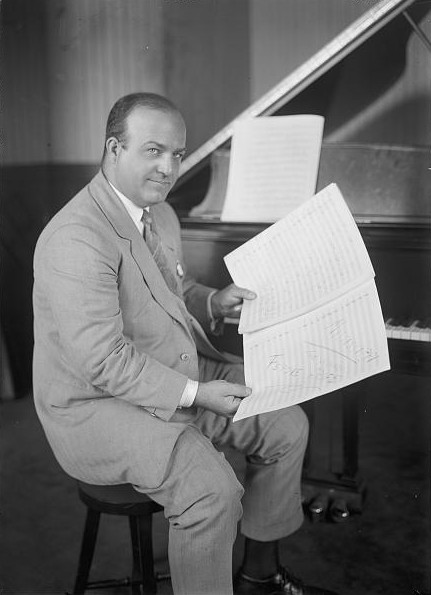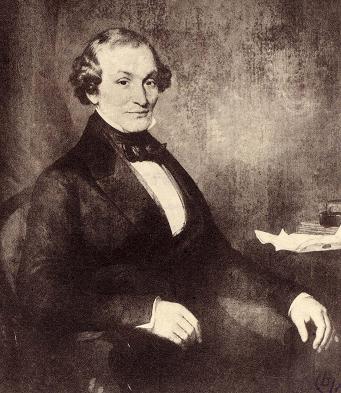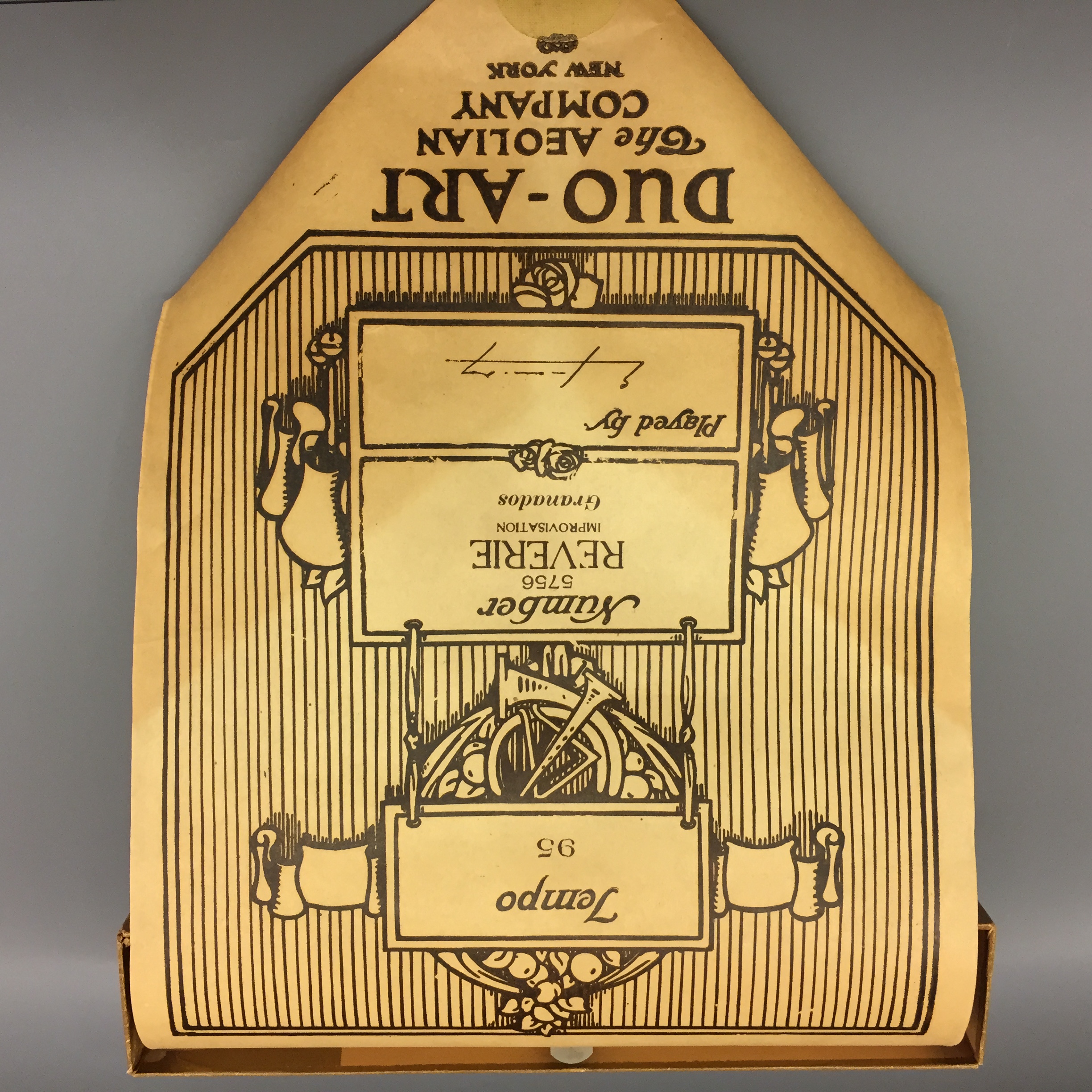|
Ampico
American Piano Company (Ampico) was an American piano manufacturer formed in 1908 through the merger of Wm. Knabe & Co., Chickering & Sons, and Foster-Armstrong. They later purchased the Mason & Hamlin piano company as their flagship piano. The merger created one of the largest American piano manufacturers. In 1932, it was merged with the Aeolian Company to form Aeolian-American Co. Reproducing pianos From 1914, American Piano was one of the leading producers of player pianos, most notably their reproducing player known as the Ampico. The Ampico reproducing player piano was able to capture all the expression of the original performance, with dynamics and fine nuances other devices could not reproduce. Their main competitors in reproducing players were the Aeolian Duo-Art (1913) and Welte-Mignon (1905). The player piano and reproducing Ampico mechanism was originally designed by Charles Fuller Stoddard (1876–1958) with Dr. Clarence Hickman joining the company in the mid-1920s ... [...More Info...] [...Related Items...] OR: [Wikipedia] [Google] [Baidu] |
Sergei Rachmaninoff
Sergei Vasilyevich Rachmaninoff; in Russian pre-revolutionary script. (28 March 1943) was a Russian composer, virtuoso pianist, and conductor. Rachmaninoff is widely considered one of the finest pianists of his day and, as a composer, one of the last great representatives of Romanticism in Russian classical music. Early influences of Tchaikovsky, Rimsky-Korsakov, and other Russian composers gave way to a thoroughly personal idiom notable for its song-like melodicism, expressiveness and rich orchestral colours. The piano is featured prominently in Rachmaninoff's compositional output and he made a point of using his skills as a performer to fully explore the expressive and technical possibilities of the instrument. Born into a musical family, Rachmaninoff took up the piano at the age of four. He studied with Anton Arensky and Sergei Taneyev at the Moscow Conservatory and graduated in 1892, having already composed several piano and orchestral pieces. In 1897, following th ... [...More Info...] [...Related Items...] OR: [Wikipedia] [Google] [Baidu] |
Winifred MacBride
Winifred MacBride (born before 1900 – died after 1975), later Winifred MacBride Thomas, was a Scottish-born concert pianist who achieved international acclaim in the first half of the twentieth century, particularly for her interpretations of the works of Beethoven and Tchaikovsky. She also taught piano at Catawba College in North Carolina. Early life Winifred MacBride was born in Glasgow, Scotland. She studied piano at the London Royal College of Music; she also studied with Benno Moiseiwitsch. Her younger sister Florence MacBride played violin, and the sisters played a concert together in Glasgow in 1926. Career In concert MacBride gave a debut recital at London's Aeolian Hall in 1918. In 1923 she was on the programme for the Proms. Her 1924 concert at Queen's Hall, London, conducted by Sir Henry J. Wood, garnered critical raves for her technical virtuosity as well as the intelligence of her interpretive skills. MacBride was praised for her "intellectual serenity" ... [...More Info...] [...Related Items...] OR: [Wikipedia] [Google] [Baidu] |
Marguerite Volavy
Marguerite Volavy, also known as Madame Volavy (1886 - 1951), was a pianist known for her recordings of Czech music and composers. Early life Volavy was born in Brno, Moravia, and studied at the Vienna Conservatory under Anton Door. She graduated first in her class in piano at the age of 15. In 1902 she began playing with the Prague Orchestra, and then in 1912 she moved to the United States where she played her first concert at Carnegie Hall in 1915. She performed in New York City, multiple times. In addition to her live performances, Volavy recorded piano rolls and talked with newspaper reporters about how the piano rolls were made and edited. She recorded piano songs under the name Volavy and two pseudonyms (Felix Gerdts and George Kerr). Her piano rolls were recorded by the American Piano Company also known as Ampico. On the piano rolls, the pieces she recorded included works by Robert Schumann and Ludwig van Beethoven. Volavy's hand was damaged in an accident on the ... [...More Info...] [...Related Items...] OR: [Wikipedia] [Google] [Baidu] |
Player Piano
A player piano (also known as a pianola) is a self-playing piano containing a pneumatic or electro-mechanical mechanism, that operates the piano action via programmed music recorded on perforated paper or metallic rolls, with more modern implementations using MIDI. The rise of the player piano grew with the rise of the mass-produced piano for the home, in the late 19th and early 20th century. Sales peaked in 1924, then declined, as the improvement in phonograph recordings due to electrical recording methods developed in the mid-1920s. The advent of electrical amplification in home music reproduction via radio in the same period helped cause their eventual decline in popularity, and the stock market crash of 1929 virtually wiped out production. History In 1896, Edwin S. Votey invented the first practical pneumatic piano player, called the Pianola. This mechanism came into widespread use in the 20th century, and was all-pneumatic, with foot-operated bellows providing a sou ... [...More Info...] [...Related Items...] OR: [Wikipedia] [Google] [Baidu] |
Leo Ornstein
Leo Ornstein (born ''Лев Орнштейн'', ''Lev Ornshteyn''; – February 24, 2002) was an American experimental composer and pianist of the early twentieth century. His performances of works by avant-garde composers and his own innovative and even shocking pieces made him a cause célèbre on both sides of the Atlantic. The bulk of his experimental works were written for piano. Ornstein was the first important composer to make extensive use of the tone cluster. As a pianist, he was considered a world-class talent. By the mid-1920s, he had walked away from his fame and soon disappeared from popular memory. Though he gave his last public concert before the age of forty, he continued writing music for another half-century and beyond. Largely forgotten for decades, he was rediscovered in the mid-1970s. Ornstein completed his eighth and final piano sonata in September 1990 at the age of ninety-four, making him the oldest published composer in history at the time (a mark since ... [...More Info...] [...Related Items...] OR: [Wikipedia] [Google] [Baidu] |
Marguerite Melville Liszniewska
Marguerite Melville Liszniewska (April 17, 1879 – March 7, 1935) was an American pianist, teacher, and composer. Early life and education Melville was born in Brooklyn, New York, the daughter of Charles W. Melville and Mary Theresa Hughes Melville. Her parents were both musical; her father, an organist, was born in Scotland, and her mother, a singer, was born in Canada. She went to study piano and composition in Berlin at age 15, with Ernst Jedliczka and O. B. Boise, and later in Vienna with Theodor Leschetizky.Ford, Emmett M"Marguerite Melville Liszniewska"''AMICA International'' (March 1981): 37. "It is such a beautiful thing to study music," she said in an interview, "Artistic things get so easily crowded to the wall or pushed completely out of our lives. Even the least inclination to learn much should be encouraged in all ages." Career Musician Melville gave her public debut in 1897, in Berlin, and made her London debut in 1910. She played several times at Queen's ... [...More Info...] [...Related Items...] OR: [Wikipedia] [Google] [Baidu] |
Ferde Grofé
Ferdinand Rudolph von Grofé, known as Ferde Grofé (March 27, 1892 April 3, 1972) (pronounced FUR-dee GROW-fay) was an American composer, arranger, pianist and instrumentalist. He is best known for his 1931 five-movement tone poem, '' Grand Canyon Suite'', and for having orchestrated George Gershwin's '' Rhapsody in Blue'' prior to its 1924 premiere. During the 1920s and 1930s, he went by the name Ferdie Grofé. Early life Grofé was born in New York City in 1892 to German immigrants. He came by his extensive musical interests naturally. His family had four generations of classical musicians. His father, Emil von Grofé, was a baritone who sang mainly light opera; his mother, Elsa Johanna Bierlich von Grofé, a professional cellist, was also a versatile music teacher who taught Ferde to play the violin and piano. Elsa's father, Bernardt Bierlich, was a cellist in the Metropolitan Opera Orchestra in New York and Elsa's brother, Julius Bierlich, was first violinist and concert ... [...More Info...] [...Related Items...] OR: [Wikipedia] [Google] [Baidu] |
Chickering & Sons
Chickering & Sons was an American piano manufacturer located in Boston, Massachusetts. The company was founded in 1823 by Jonas Chickering and James Stewart, but the partnership dissolved four years later. By 1830 Jonas Chickering became partners with John Mackay, manufacturing pianos as "Chickering & Company", and later "Chickering & Mackays" until the senior Mackay's death in 1841, and reorganized as "Chickering & Sons" in 1853. Chickering pianos continued to be made until 1983. History It was P.T. Barnum who persuaded Jenny Lind - the Swedish Nightingale - to make a concert tour of the United States. After her agreement, Barnum commissioned the Chickering company to manufacture a custom grand piano for her nationwide tour, ultimately involving 93 performances. The piano was completed by August 1850; Lind arrived in September and the concert series began in Boston. Her pianist was Otto Goldschmidt, whom she married at the end of her tour. Coincidentally, as the tour began, H ... [...More Info...] [...Related Items...] OR: [Wikipedia] [Google] [Baidu] |
Duo-Art
Duo-Art was one of the leading reproducing piano technologies of the early 20th century, the others being American Piano Company (Ampico), introduced in 1913 too, and Welte-Mignon in 1905. These technologies flourished at that time because of the poor quality of the early Phonograph (Gramophone in Britain).Daily Telegraph, Gerald Stonehill Obituary 8 Mar 11 Between 1913 and 1925 a number of distinguished classical and popular pianists, such as Ignace Paderewski, Josef Hofmann, Percy Grainger, Teresa Carreño, Aurelio Giorni, Robert Armbruster and Vladimir Horowitz, recorded for Duo-Art, and their rolls are a legacy of 19th-century and early 20th-century aesthetic and musical practice. The recording process – using a piano wired to a perforating machine – was unable to capture the pianist's dynamics automatically. These were added by a recording technician, who manipulated hand controls to notate the dynamics onto the recording 'master'. Thus, post-recording editing was req ... [...More Info...] [...Related Items...] OR: [Wikipedia] [Google] [Baidu] |
Welte-Mignon
M. Welte & Sons, Freiburg and New York was a manufacturer of orchestrions, organs and reproducing pianos, established in Vöhrenbach by Michael Welte (1807–1880) in 1832. Overview From 1832 until 1932, the firm produced mechanical musical instruments of the highest quality. The firm's founder, Michael Welte (1807-1880), and his company were prominent in the technical development and construction of orchestrions from 1850, until the early 20th century. In 1872, the firm moved from the remote Black Forest town of Vöhrenbach into a newly developed business complex beneath the main railway station in Freiburg, Germany. They created an epoch-making development when they substituted the playing gear of their instruments from fragile wood pinned cylinders to perforated paper rolls. In 1883, Emil Welte (1841-1923), the eldest son of Michael, who had emigrated to the United States in 1865, patented the paper roll method (), the model of the later piano roll. In 1889, the tech ... [...More Info...] [...Related Items...] OR: [Wikipedia] [Google] [Baidu] |
Aeolian Company
The Aeolian Company was a musical-instrument making firm whose products included player organs, pianos, sheet music, records and phonographs. Founded in 1887, it was at one point the world's largest such firm. During the mid 20th century, it surpassed Kimball to become the largest supplier of pianos in the United States, having contracts with Steinway & Sons due to its Duo-Art system of player pianos. It went out of business in 1985. History The Aeolian Company was founded by New York City piano maker William B. Tremaine as the ''Aeolian Organ & Music Co.'' (1887) to make automatic organs and, after 1895, as the ''Aeolian Co.'' automatic pianos as well. The factory was initially located in Meriden, Connecticut. Tremaine had previously founded the Mechanical Orguinette Co. in 1878 to manufacture automated reed organs. The manufacture of residence or "chamber" organs to provide entertainment in the mansions of millionaires was an extremely profitable undertaking, and Aeolian ... [...More Info...] [...Related Items...] OR: [Wikipedia] [Google] [Baidu] |
Piano Manufacturing Companies Of The United States
The piano is a stringed keyboard instrument in which the strings are struck by wooden hammers that are coated with a softer material (modern hammers are covered with dense wool felt; some early pianos used leather). It is played using a keyboard, which is a row of keys (small levers) that the performer presses down or strikes with the fingers and thumbs of both hands to cause the hammers to strike the strings. It was invented in Italy by Bartolomeo Cristofori around the year 1700. Description The word "piano" is a shortened form of ''pianoforte'', the Italian term for the early 1700s versions of the instrument, which in turn derives from ''clavicembalo col piano e forte'' (key cimbalom with quiet and loud)Pollens (1995, 238) and ''fortepiano''. The Italian musical terms ''piano'' and ''forte'' indicate "soft" and "loud" respectively, in this context referring to the variations in volume (i.e., loudness) produced in response to a pianist's touch or pressure on the keys: the grea ... [...More Info...] [...Related Items...] OR: [Wikipedia] [Google] [Baidu] |






